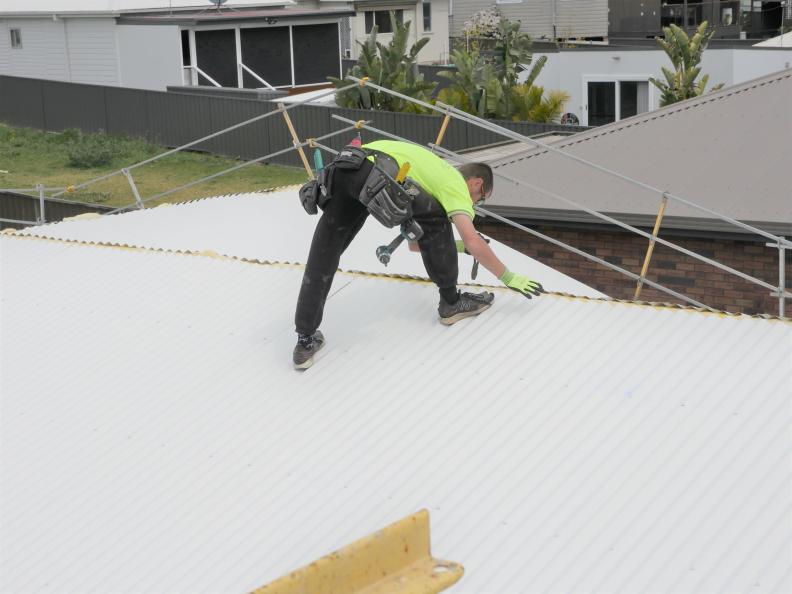
It is important that you walk on roofing carefully, to avoid damage to the roofing and injury to yourself.
If there will be heavy foot traffic or where an area is to be treated as non-trafficable on a roof, provide a temporary walkway or working platform, with consideration of handrails to minimise the risk of damage and injury.
Always take particular care when walking on wet or newly laid sheets – particularly on steeply pitched roofs.
Generally, keep your weight evenly distributed over the soles of both feet to avoid concentrating your weight on either heels or toes.
Always wear smooth soft-soled shoes; avoid ribbed soles that pick up and hold small stones, swarf, and other objects.
Great care should be taken when moving near roof overhang (and overlapping ends of sheets such as expansion joints). The overhang should be treated as a non-trafficable area. When walking near an overhang, walk over or as close as practical to the roofing supports (usually over fastener locations). It is not recommended to walk on the overhang due to the potential for large deflections, which can result in a loss of balance and increased potential fall risk. This is of particular importance with overhangs at building edges.
When walking parallel to the ribs between supports:
- For corrugated style roofing, walk on at least two corrugations.
- For rib-and-pan style roofing, walking in the pans.
Be careful when moving between supports. Do not walk in the pan immediately adjacent to flashings or translucent sheeting. Walk at least one pan away. When you walk across the ribs between supports, walk over or close to the roofing supports (usually over fastener locations).